The road to Tannoy has been a journey into an audiophile lifestyle. I am not going to lose you with my life story, but rather take you on the journey that brought me to Tannoy speakers. My path is probably not unique to audiophiles but for me it was a roadmap to high fidelity. Landing on the Tannoy Arden was one of the greatest gifts of my life.
Louder is More Audiophile?

The journey started big and loud with the Klipsch KLF-30 loudspeakers. Louder is more audiophile, right? Teenagers seem to think so; at least mine do. My favorite track to play loudly on the Klipsch was the live version of Led Zeppelin’s “Moby Dick” from How the West Was Won. The KLFs gave it up.
It took me 17 years to change my system which is a testament to the quality of Klipsch and my Yamaha RXV-800 AVR. I was oblivious to what better quality audio sounded like until my friend and co-owner of the Audio Room, Kurt Villanueva, helped me coordinate my first ever audio event. A scotch and audio session at the Chateau Lylander.
With help from Kurt, Chris, and several IG audio friends; @audioloveyyc, @mistachen and @houseofbobber, we evaluated the NAD Master Series M10, Naim Uniti Atom and Hegel H90 integrated amplifiers with the Klipsch loudspeakers.
The NAD M10 had the lowest noise floor but was not as etched or pinpoint in its sound as the Naim network amplifier that makes you sit up and listen. The M10 allows you to relax and sink into the seat with its digital VU meters placing you under its spell.
The Hegel H90 was not better than the M10 or Naim; it was different and worked well with the KLFs. Having experienced more audio components, I can now say the H90 adds some punch to the low end; and the KLFs liked that weight.

Hegel engineers claim that the H90 adds nothing to the music, and that each level of Hegel reveals more detail, resolution, and spatial information. The Hegel H90 was the most affordable of the 3 components with the most traditional form factor. I also liked the construction and simplicity of its operation. This was a huge step for me on my road to high fidelity and the Tannoy Arden.
Better Sound Starts at the Source
With the new integrated amplifier came many other new changes; most notably the Bluesound Node 2i Network Streamer. I started with Tidal and an AudioQuest Cinnamon digital cable.
Having lived with the Node 2i for some time, I recommend it highly or the brand new updated version which Bluesound are calling the NODE. There are used Node 2i for sale online and I think it offers so much value for the money.
I’ve met more than a few audiophiles online who swear by the Node 2i because of its sound quality, useability, and the availability of so many streaming platforms through its BluOS operating system.
The more time I spent listening to it – the more I realized how inferior lossy files sound and how Bluetooth is truly limited when it comes to lossless playback.
Upgrading to Roon was a bit of a shock even when only using Tidal. Qobuz is not really available in Canada and I only wanted to support one of the audiophile streaming platforms which left me with Tidal and MQA.
As much as I love the Node 2i, I knew that I was only hearing perhaps 80-85% of what’s possible with high-end digital playback and I upgraded to a USB Ranger with a fiber optic connection to better isolate my network player and I upgraded to an exaSound e62 DSD512 DAC which completely changed what I was hearing from both streaming and CDs.
For better or worse, everything matters…
Audio systems are very sensitive; every component matters. The sound will reflect your weakest link – which explains why audiophiles are so prone to buying and dumping equipment and often overspending on tweaks based on questionable science. There’s nothing wrong with trying to extract the most from your system but there must be a roadmap; you need to focus on getting the guts right before going for the last 5% that you feel is eluding you.
PS Audio CEO, Paul McGowan, has a very simple philosophy when it comes to system building that I think makes a lot of sense.
Buy the best speakers that you can afford.
It doesn’t matter if they are $250, $500, or $5,000.
Before I made the decision to purchase the Tannoy Arden loudspeakers, I did something stupid that a lot of audiophiles do – I made an offer on a pair of Tannoy Canterbury GR which were not really something that I could afford. Had I purchased them, I would not have had the money to afford the rest of the equipment required to drive them properly and the source components.
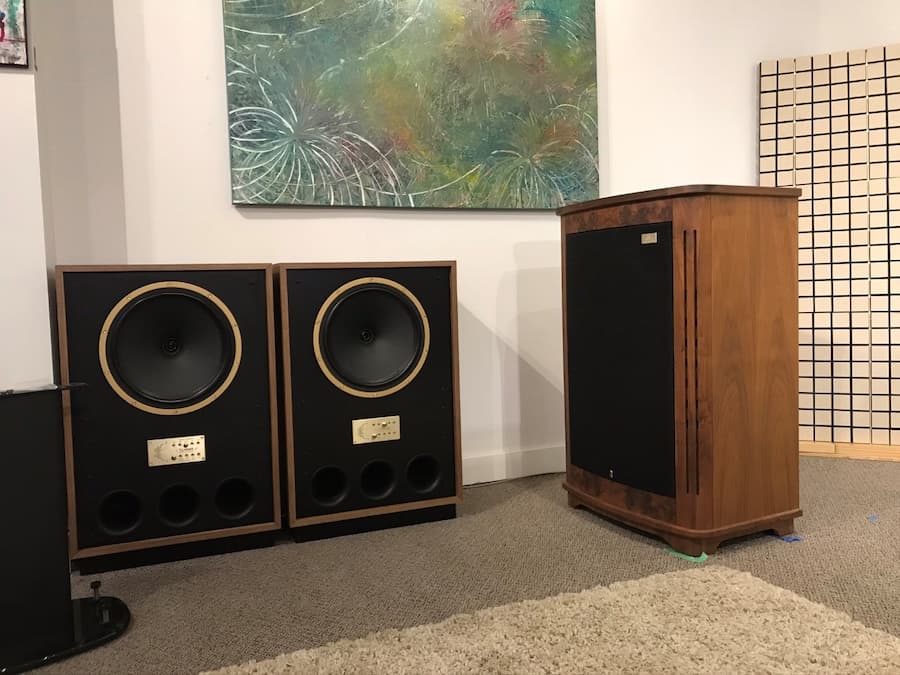
Audio is about finding the right balance. It’s not about spending the most money possible and praying for the best.
Spending $20,000 on a pair of loudspeakers and driving them with a $2,000 integrated amplifier, $549 network player, and $700 turntable is not the way you want to go. Not ever.
The Sound of Tannoy
I knew I wanted the Tannoy sound from the moment I heard the Ardens, Canterburys, Autograph Mini, and a pair of custom Tannoy HPDs.
Unless you grew up during World War II, you’re probably not aware that Tannoy PA systems were used in the United Kingdom to warn of German air attacks or as a way for the general population to listen to Sir Winston Churchill’s rousing speeches outdoors.
The brand was not in the loudspeaker business at launch but pivoted and introduced the Dual Concentric cone speaker after WW II and has never looked back.
Excellent transient response and top end purity are only two of the attributes that make Tannoy loudspeakers so special. When you add in their high resolution midrange and coherency — you have the basis for a very fine loudspeaker.
My desire for a pair of Tannoy became so intense that I would sneak into The Audio Room and walk around the demonstration room wondering how the Ardens would look in my own space. After some careful negotiations, the store allowed me to take their demo pair of Tannoy Arden home.
But as is often the case in high-end audio, it was not such smooth sailing at home initially.

The room is the most important component in any stereo system and my initial results were frustrating. These are not set-and-forget loudspeakers; I spent countless hours moving these rather substantial loudspeakers into different locations hoping for some dramatic change in the sound quality.
At one point, I brought them almost into the center of the room and created a nearfield listening situation that was an improvement but not practical in a real-world scenario with family.
The Tannoy Ardens require break-in. They also need to be raised to achieve the proper height for the Tulip tweeter; not to mention the toe-in that needs to be really carefully set.
This led to the Audio Acoustic Engineering Arden Stand product development. I have found castors extremely valuable for placement adjustments; they also create great coupling to the floor. You can order the Arden Stands at AAEaudio.ca.

Before I finally decided that the Tannoy Arden were the right speakers for me; in my specific listening space with the type of equipment that I wanted to use with them, I did experiment with a lot of loudspeakers from Focal, Dynaudio, ELAC, and B&W.
All of them did certain things really well. My time with all of them made me realize just how good the Tannoy speakers really are and that you’ll never really be truly satisfied if you don’t find the best pair of loudspeakers that you can afford (and like) and just stop.
I’ve learned to appreciate all of the little things that the Tannoy do so well. In the high-end context, they are not inexpensive but I’ve listened to far more expensive loudspeakers that I did not enjoy as much.
With the Tannoy Ardens, my system is balanced; $5,000 for the loudspeakers, $4,000 devoted to the preamp and power amps, $3,000 in the DAC, $2,000 on the streaming solution and power supply, and about $2,000 for the cables.
My system is a digital one although I still own a turntable. My dealer told me to never sell it because I’ll regret it for life. He’s probably right.
What’s Next?
I am done. Famous last words for most audiophiles.
I definitely need a new CD player but that’s going to have to wait while I work on two more important projects.

My next steps are some custom Tannoy Arden crossovers, and AAE room acoustic treatment products.
My journey with the Tannoy Ardens has just begun.


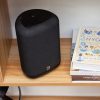
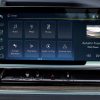
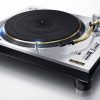
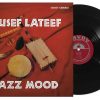
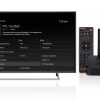
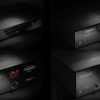

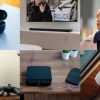

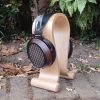
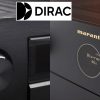





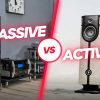




















Richard Crawford
July 7, 2021 at 7:32 pm
I have the ardens and a luxman integrated… Have a listen to a project rs2 cd box transport… Has blown my mind… Wired into my chord qutest… Everything sounds far away from digital
Ian White
July 7, 2021 at 7:54 pm
Richard,
Interesting about the Luxman. Which model and how much power?
I own the Tube Box DS2 Phono and have reviewed the CD Box. Excellent stuff.
Ian White
Richard Crawford
August 22, 2022 at 10:20 pm
I use the luxman 550ax2…. But have been looking at allnic amps
Saviour Ellul
February 15, 2025 at 1:14 pm
What is wrong with the Arden’s standard crossover?
Keith
July 8, 2021 at 4:37 am
Very well done post. I liked reading about your journey. It really never stops totally, but at least you have found your speakers.
I too have enjoyed some Tannoy although a few decades ago when I was in the biz and bought a pair of Cheviots for the great price of about $500 at the time.
Scott Lylander
July 9, 2021 at 1:56 pm
Thanks Keith! Audiophile Ahoy.
Roy Rochelle
July 4, 2023 at 6:26 am
I am 78.I have been through a lifetime of speakers and now have ended up with the the new Legacy Ardens.Thank you for the very fine review.There is something about the warmth that captivates me. On many CDs it provides a you are there experience. Happy to have them.
Dave
January 12, 2022 at 9:43 pm
Um Where did you get them for $5000???!
Aaron
August 17, 2022 at 9:21 pm
Yeah, exactly. Would like to know that!
Dorsia777
February 5, 2022 at 2:41 am
Awesome read! I’ve never heard these but they sound majestic. I appreciated the Megadeth, Tool, White Stripes and Dio albums. I like where your head is at!
Tell me Take No Prisoners sounds dope on those Tannoys!
Todd
November 12, 2022 at 2:09 am
Great article. I would like to know where you got the stands.